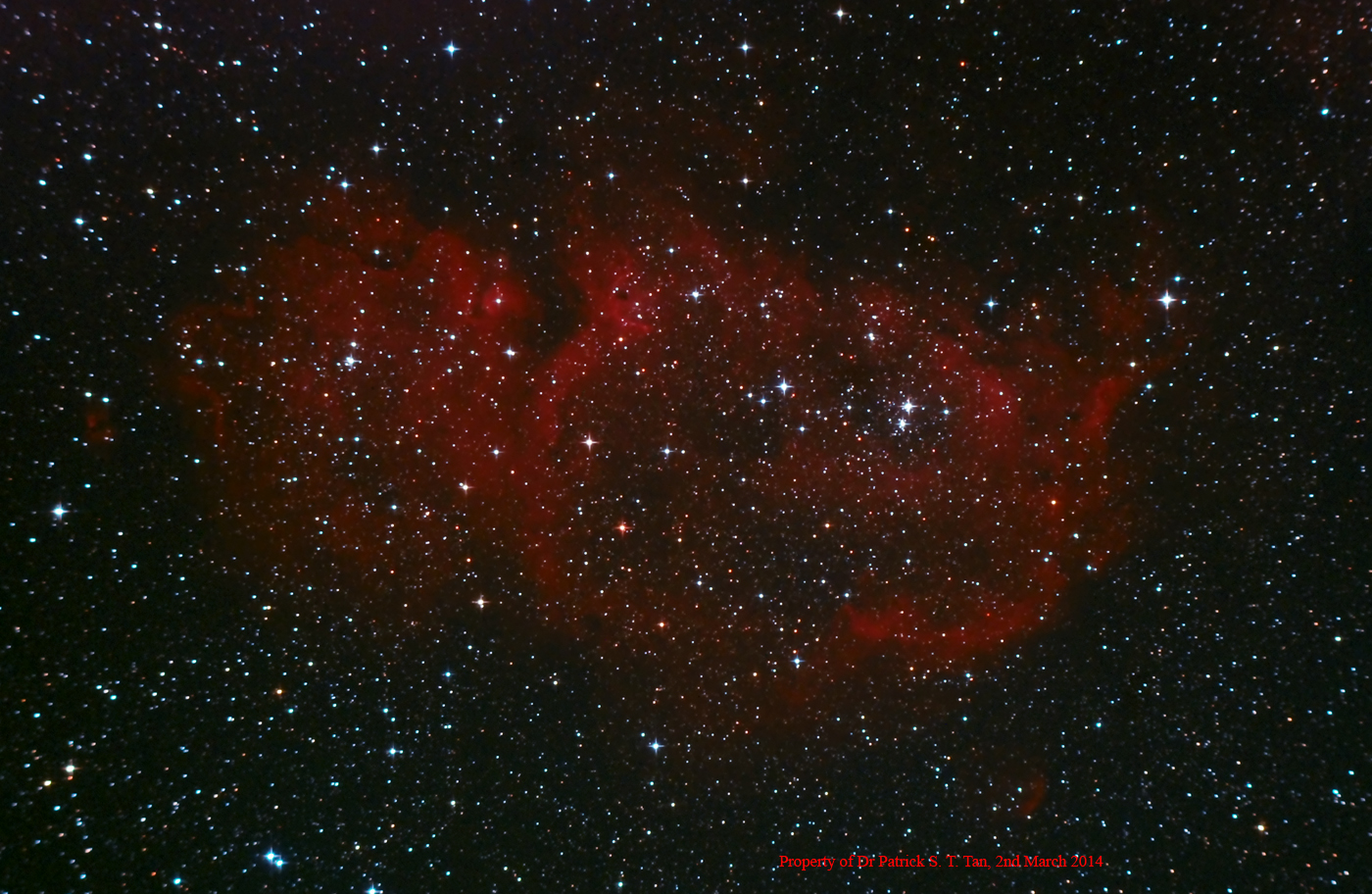
IC1848 - Soul Nebula
Date: 01/03/2014 Time: 1954hrs Location: Sunningwell Temperature: 4.0ºC Relative Humidity: 59%
Camera: Nikon D80 Scope: William Optics Z66 Apo Doublet at prime focus Mount: piggy-backed on Meade LX90 in equatorial mode Filter: Astronomik CLS (LPF broadband filter) Exposures: 5 x 10min + 1 x 12min ISO: 1600 F ratio: 5.9 (No focal reducer) Guidance: Autoguided
After almost one year to the day, I took the LX90 and my ZX66 out onto the balcony. It was on the 2nd of March last year that I was able to photograph the companion nebula to this one, the Heart, IC1805. Lying adjacent to it, this nebula IC1848 is about 7,500 Light Years away from us and contains a few open clusters (CR34, 632, 634) which are also stellar nurseries with many new energetic stars clearing away the interstellar dust from their vicinity, leaving gaps in the reddish cloud of ionised molecular hydrogen which typically constitutes emission nebulae. Note also the separate islands of nebulosity to the left and bottom right of the main nebula (IC1871 and 670 respectively). The photography conditions were the best for the entire winter which has been one of lashing wind and diluvian rain. My photography was interrupted on 2 separate occasions for an hour or more by large sheets of cloud covering much of southern England, blowing in from the west and Ireland. Cassiopeia and Perseus are late in the season and are relatively low in the north-western sky after dark. All these conditions make for very poor seeing conditions and light-polluted exposures. 10, 10 minutes exposures were made with one continuing for 12 minutes because I was unable to close the shutter in time. 2 were lost through cloud drifting into the field of view and 2 more were technically unsalvageable due to the Nikon battery running out prior to completion of the dark subtraction process. So I was left with 5, 10 minute exposures and 1, 12 minute exposure, making a cumulative time of just over 60 minutes.
The separate raw images were stacked summatively in Maxim DL, white and dark point setting was carried out in Adobe Photoshop using the levels command and midpoint enhancement was made using the curves command. One pass of Noise Ninja was carried out before cropping the image that you see. Without the focal reducer, the image is bigger than would otherwise have been but the field suffers from vignetting which is normally reduced by the field-flattening effect of the focal reducer.
It is approaching the time of year when Leo is swinging by my balcony in the late evening and if the weather improves, I might have the opportunity to photograph some galaxies later in Spring.
HOME PICTURES: Solar system PICTURES: Wide field